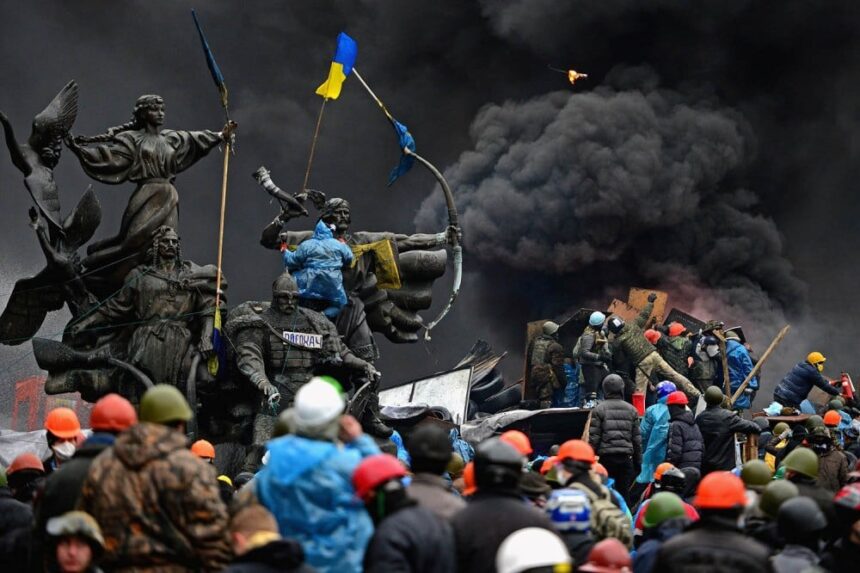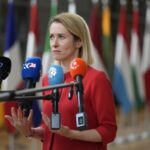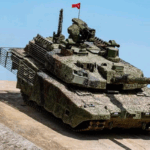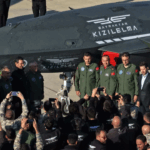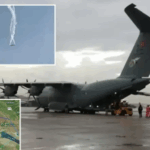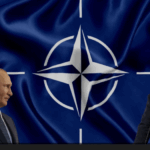Summary by Geopolist | Istanbul Center for Geopolitics:
The Foreign Policy article challenges the commonly held belief, promoted by Russian propaganda and some Western figures, that the Maidan Revolution in Ukraine in 2014 was a coup against President Viktor Yanukovych backed by the West.
It argues that the claim of an illegitimate removal of Yanukovych is incorrect. Instead, it suggests that Russia orchestrated Yanukovych’s departure as part of its Plan B: to invade Crimea and create unrest in eastern Ukraine. This plan was already in place before Yanukovych was removed, indicating that Putin’s strategic goals were much more aggressive than simply preventing Ukraine from aligning with the West.
It also details how Moscow’s intervention escalated the violence during the Maidan protests and facilitated Yanukovych’s eventual removal. This, in turn, paved the way for Russia to annex Crimea and pursue broader ambitions in Ukraine.
Read more below.
The Stubborn Legend of a Western ‘Coup’ in Ukraine
While Russia has made a slew of outlandish assertions about Ukraine, including that the country is led by a Nazi regime, few Russian narratives have entrenched themselves more thoroughly in the Western far right and far left than that Ukrainian President Viktor Yanukovych was illegitimately removed from office in a Western-backed coup in February 2014. This claim has been a key element of Russian propaganda, echoed in the United States by such public figures as independent U.S. presidential candidate Robert F. Kennedy, Jr., filmmaker Oliver Stone, and Cato Institute defense expert Ted Galen Carpenter.
The idea that Yanukovych’s removal was illegitimate is easily refuted: After Yanukovych abandoned his office by fleeing from Ukraine to Russia, he was stripped of the presidency by a constitutional majority in parliament. Even Russia joined the rest of the world in recognizing the new Ukrainian government a few months later.
But the truth underlying the events of February 2014 is far more interesting: The preponderance of evidence suggests that it was Moscow itself that triggered Yanukovych’s departure in order to launch a pre-arranged Plan B—the invasion of Crimea and an engineered “uprising” in eastern Ukraine—after Moscow’s Plan A—a new treaty with a pliant government in Kyiv that placed it under Russia’s de facto control—was about to fail. Indeed, the timeline shows that preparations for Plan B were well underway before Yanukovych’s removal from office. All this, in turn, demonstrates that Russian President Vladimir Putin’s plans for Ukraine were far more predatory all along than merely preventing the country’s drift toward NATO, as many of Russia’s Western apologists contend.
The Maidan mass protests—which lasted from November 2013 to February 2014 in Kyiv and many other cities across Ukraine—erupted when Yanukovych pivoted from a wide-ranging association agreement with the European Union to a similar one with the Russian-led Eurasian Economic Union. Ukraine’s move toward closer relations with the EU was the trigger for Putin’s Plan A: the transfer of Ukraine to the Kremlin’s sphere of influence. To stop Yanukovych’s deal with Europe, Moscow pressured Kyiv with trade sanctions, including an embargo of key Ukrainian exports to Russia. In return for joining Russia’s economic bloc, Moscow offered Kyiv an emergency $3 billion loan to shore up a budget drained of resources by Yanukovych’s corruption. At the same time, Russia pressured him to violently crush the Maidan, suppress the pro-Western opposition, and thereby alienate him from the West. Toward this end, officials from the Russian security services and Putin aide Vladislav Surkov were frequent visitors in Kyiv.
A priest holds a cross and shield during clashes between anti-government protesters and riot police in Kyiv on Feb. 20, 2014.Sergey Gapon/AFP via Getty Images
Yanukovych, who had never established an absolute autocracy on the Russian model, resisted an all-out crackdown against the hundreds of thousands of largely peaceful protesters throughout western and central Ukraine. As his final actions as president would show, he also retained the hope of being able to balance Russian influence with continued relations with the West. It was to prevent that outcome that Moscow triggered his departure.
In all, more than 100 civilians and 13 police and security service operatives would die during the Maidan. Yet while the security services brutally attacked protesters all throughout the Maidan, the main deadly violence only occurred between Feb. 18 and Feb. 20, 2014—precisely the time when negotiations between the government and opposition over a political compromise were gaining traction. Brokered by the foreign ministers of Poland, France, and Germany—Radoslaw Sikorski, Laurent Fabius, and Frank-Walter Steinmeier, respectively—with Putin envoy Vladimir Lukin present as well, negotiations had begun to gain momentum on Feb. 17. Over the next three days, 78 protesters and 11 police were killed.
This article is adapted from Battleground Ukraine: From Independence to the War With Russia by Adrian Karatnycky (Yale University Press, 368 pp., $35, June 2024).
This level of violence shocked and angered Ukrainian society. In response to mounting public fury and the threat of extensive Western sanctions, Yanukovych intensified negotiations on a compromise and moved to release detained and imprisoned protesters. For Putin, however, any path of negotiated compromise was a clear setback to his Plan A, which would have locked Yanukovych and his government into complete dependency on Moscow.
As deadly violence engulfed the streets of Kyiv, Yanukovych signaled his agreement to a broad government of national unity. After the opposition turned down the top post of prime minister, Yanukovych indicated that he would nominate Serhiy Tihipko, the billionaire former head of Ukraine’s central bank. For the Russians, Tihipko was a red flag: He had denounced politicians who were willing to “sacrifice Ukraine’s territorial integrity for electoral votes,” was a proponent of Ukraine’s integration with the EU, and opposed making Russian the second state language.
Coupled with the potential transfer of key ministries into the hands of the opposition and new elections by year’s end, Yanukovych’s willingness to compromise set off alarm bells in the Kremlin, whose representative, Lukin, withheld his signature from the agreement. Once before, during the 2004 Orange Revolution, Yanukovych had disappointed Putin by refusing to use brute force to stay in power after falsified presidential elections. When Yanukovych eventually returned to power by legal means in 2010, he further angered Russia with negotiations toward a free trade agreement with the EU, which he only aborted after extensive Russian economic sanctions and embargoes on Ukrainian exports. To Putin, Yanukovych was again vacillating and refusing to show an iron hand.
On the morning of Feb. 20, after two days of violence had failed to crush the Maidan and with Yanukovych on the verge of signing a compromise agreement with the opposition, the Kremlin pivoted. A delegation of Russian Federal Security Service officials, including Sergei Beseda, head of the Fifth Service in charge of international operations, arrived in Kyiv—the third such visit since the Maidan began. Officially there to “protect Russian diplomatic facilities,” Beseda’s real mission was to advise hardliners inside Yanukovych’s leadership team, block a compromise, and, failing that, set in motion a Plan B—Russia’s ambitious plot to splinter Ukraine.
- From left: Polish, German, and Ukrainian officials mingle after signing the agreement to end Ukraine’s political crisis at the Presidential Palace in Kyiv on Feb. 21, 2014. Thomas Trutschel/Photothek via Getty Images
- Ukrainian lawmakers clash during a parliament session in Kyiv on Feb. 21, 2014. Maksym Marusenko/AFP via Getty Images
As the EU envoys met with Yanukovych and opposition leaders to finalize the deal—and as Yanukovych did not agree to a request by Beseda to meet—the hardliners in the government escalated, presumably under Moscow’s instructions. Then-Ukrainian Interior Minister Vitaliy Zakharchenko and Security Service chief Oleksandr Yakimenko unleashed a brutal attack on the protesters in an apparent attempt to unravel the deal that that was in the process of being struck.
Indeed, Feb. 20 proved to be the bloodiest day, with police snipers shooting 48 protesters.
An alleged sniper and member of the security forces is beaten by anti-government protesters in Kyiv on Feb. 22, 2014. Bulent Kilic/AFP via Getty Images
Zakharchenko’s role in the mayhem is well established, as are his close relations with Russia’s security services, who advised him tactics and had equipped his ministry with grenades, tear gas, and other crowd control munitions purchased for $100,000. His role as a trusted Russian asset was confirmed after his escape to Moscow, when he became senior advisor to Rostec, Russia’s state company in charge of sensitive advanced technologies, including for the military. He also ran a Russian fund that rewarded traitors from Ukraine’s security forces. Yakimenko, who had spent a decade as an officer in Russia’s armed forces and whose murky past suggested links to Russian security services, deployed snipers from the Ukrainian Security Service’s Alpha special forces unit. Ukrainian prosecutors would later allege that Yakimenko subsequently supplied pro-Russian insurgents in Ukraine with weapons as part of Putin’s effort to dismember Ukraine.
In the aftermath of the mass killings, Yanukovych signed the Agreement on the Stabilization of the Political Crisis in Ukraine on Feb. 21. But the bloodshed had changed the political calculus. Denounced by the opposition and abandoned by many of his allies in parliament, calls for Yanukovych to step down gained momentum. Yet even for the most radical elements in Ukraine’s opposition, there was no way to force him out, especially with the continued presence of thousands of militia and security forces that remained under the command of officials closely aligned with Russia. Hundreds of armed pro-Yanukovych vigilantes had also arrived from the Donbas.
Yet surprisingly, as the compromise was being ratified, this massive security infrastructure suddenly vanished. The Berkut riot police and the Alpha group exited the government quarter, where most of the protests were taking place, along with hundreds of other police. Sikorski described the sudden and systematic withdrawal as “astonishing,” noting it was not part of the agreement. This dramatic U-turn could not have happened in such rapid and orderly fashion had it occurred through internal divisions in the security services—the usual last and necessary step in the collapse of a regime. Nor were there any prior signs of security service defections to the opposition in Kyiv. The sudden stand-down can only be explained as a top-down decision by Russia’s fifth column in the security services leadership. The justification for abandoning Yanukovych overnight was soon afterward intimated by Putin: On March 4, 2014, he said that by compromising with the opposition, “Yanukovych had in fact surrendered all his power.”
Absent the Kremlin’s support, amid the disappearance of Yanukovych’s security services in the government quarter, and with a majority for a new coalition emerging in parliament, the isolated Yanukovych sought desperately to maintain his leverage and relevance. Hoping, perhaps, to maintain some semblance of power, he switched to Russia’s Plan B—the splintering of Ukraine. He traveled to Kharkiv later that day to lead a conference of regional government leaders from southern and eastern Ukraine, but was rebuffed by leaders from his own Party of Regions. Rather than attending an ineffectual rump conference, Yanukovych escaped on the night of Feb. 21 to Crimea, where Russia’s takeover of the peninsula was already underway.
A poster with a photo of ousted President Viktor Yanukovych is taped onto a building overlooking Independence Square in Kyiv on Feb. 28, 2014. Louisa Gouliamaki/AFP via Getty Images
It was in only in the aftermath of Yanukovych’s flight from Kyiv and disappearance from Kharkiv that Ukraine’s Rada met on Feb. 22, and by a constitutional majority stripped him of office. On Feb. 28, Yanukovych finally resurfaced in Rostov-on-Don, Russia, where he gave a press conference denouncing his removal from office. It was to be his last major public event. He then disappeared from the media and Russian propaganda, which soon switched to trumpeting the “Russian Spring”—the supposed uprising in Ukraine’s south and east, largely orchestrated by Russian assets. Plan B was now in full effect.
In the end, Russia’s efforts failed in Odesa, Kharkiv, Kherson, and Mykolaiv. But it succeeded in much of the Donbas and led to Russia’s rapid annexation of Crimea. On March 26, 2014, the Russian Defense Ministry celebrated the annexation of Crimea by minting a medal. The medal, which initially appeared on a Defense Ministry website but was later removed, bears the date of the start of the “return of Crimea”: Feb. 20, 2014. It is highly unlikely that this dating of the launch of Russia’s operation to dismember Ukraine—two full days before the supposed “coup” that removed Yanukovych—is a mistake.
The Maidan mass protests and civic action were a landmark event in Ukraine’s history. The Maidan, without question, blocked Putin’s Plan A—Ukraine’s march, as a whole, into Russia’s orbit. The Maidan also forced Yanukovych to agree to new elections, compelled him to appoint a caretaker coalition government, and helped Ukraine’s democratic institutions endure. But it is no less true that it was precisely for this reason that, as an agreement was about to be struck in the final days of the Maidan, Russia rapidly shifted to its prepared Plan B, withdrew support from Yanukovych, and launched its operation to partition Ukraine.
A protester holds a Ukrainian flag from a burned building during a faceoff against police in Kyiv on Feb. 20, 2014. Bulent Kilic/AFP via Getty Images
A clear understanding of Putin’s actions and motives during this critical period in Ukraine’s history is not just a matter of setting the record straight. It is crucial in understanding Putin’s longstanding aims, which went far beyond blocking Ukraine’s accession to NATO or the EU. By early 2014, his ultimate aim was already the dismemberment of Ukraine and the eventual incorporation of many of its territories into Russia. Putin never abandoned his grandiose revisionist aims, which resurfaced in the large-scale invasion Russia launched on Feb. 22, 2022, eight years to the day that Yanukovych was removed from office.
By: Adrian Karatnycky
Source: Foreign Policy

